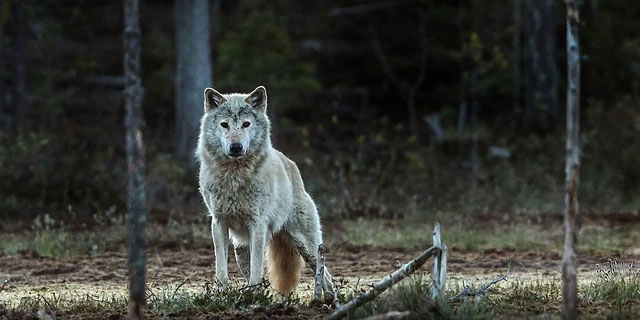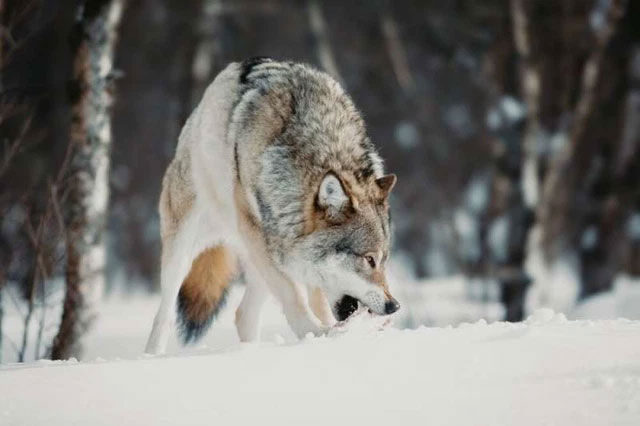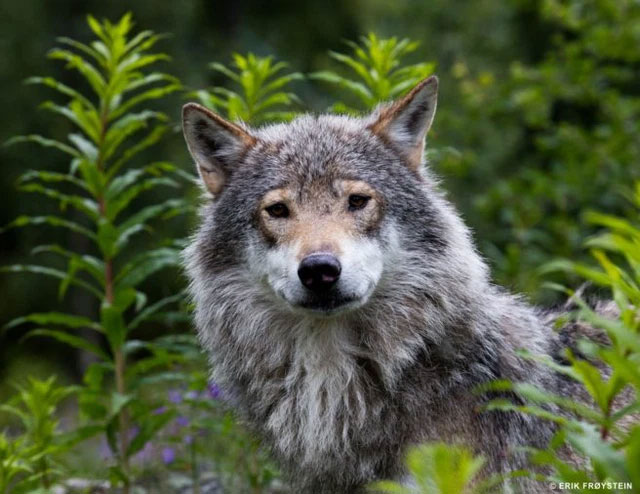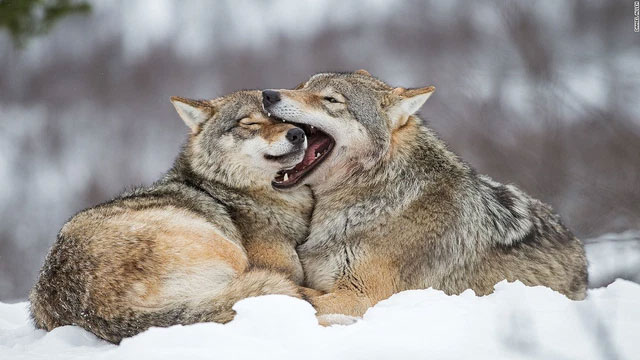This winter, as you sit in a warm café immersed in a game of Werewolf with friends, wild Norwegian wolves have officially become extinct at the border between Norway and Sweden.
Although there is still a population of around 400 wolves living here, the latest DNA analysis shows that they are not the native Norwegian wolf species. These wolves are migrants from Finland.
This wolf population itself is also threatened with extinction. Part of the reason is due to human hunting activities, while the rest stems from inbreeding, as identified by the new DNA study.

Wild Norwegian wolves have officially become extinct.
The Mystery of the 10-Year Disappearance of Norwegian Wolves
The new study was led by Professor Hans Stenøien, Director of the Norwegian University of Science and Technology (NTNU) Museum. It is the conclusion of a 5-year project aimed at reassessing the wild Norwegian wolf population, which the country’s parliament commissioned scientists to undertake.
It all began in 1970, more precisely 12,000 years ago, when glaciers began to recede from what is now Norway and Sweden at the end of the Ice Age. This allowed wolves to return and establish a strong population between the two countries’ borders.
Everything changed when humans appeared, building an agriculture based on livestock. Wolves frequently preyed on sheep and occasionally threatened human lives, turning them into a despised species that people believed they had to eliminate.
Since then, wolves became targets for hunting and also villains in the game of Werewolf. By 1970, humans had eradicated the original wolf population in the wild at the Norway-Sweden border. For a decade, not a single wolf appeared in the area.
However, in 1980, wolves surprisingly returned. There were rumors that someone had released Norwegian wolves that were kept in captivity and preserved in zoos back into the wild. If true, this action helped them repopulate and rebuild their numbers.
Yet, no individual or organization took credit for this. The issue of releasing wolves into the wild in Norway is highly controversial, with some residents opposing it due to concerns that wolves could impact livestock and their safety.
This raised questions about the origins of the wolf pack at the Norway-Sweden border since then.

The DNA of these wolves matches the Finnish wolf population.
It Turns Out They Are Not Original Norwegian Wolves
To address these doubts, the research team at the Norwegian University of Science and Technology collaborated with the University of Copenhagen to decode the genes of the wolves currently living at the Norway-Sweden border. They compared these results with the genetic codes of over 1,300 other wolves collected from around the world.
This is the most detailed genetic study of wolves to date, compared to previous studies that only examined the external features to confirm the origins of each wolf population.
“We conducted the largest genetic study of wolf species in the world“, Professor Stenøien stated. “The results show that today’s Norwegian-Swedish wolves do not share genetic traits with the original wolves in Norway and Sweden.”
Instead, the DNA of these wolves matches that of the Finnish wolf population. Explaining this, Professor Stenøien suggested that after the extinction of wolves in Norway and Sweden, a group of Finnish wolves found an empty area to expand their territory. They migrated here and settled.
Professor Stenøien’s research also examined a hypothesis that the wolves had interbred with domesticated dogs to form their community. However, once again, DNA analysis showed that they did not share any genes with domestic dogs.
“Norway is one of the countries with the fewest dogs in the world. The wolves in this country also have the lowest rate of interbreeding with domestic dogs“, Professor Stenøien noted. Therefore, although the wolf population found at the Norway-Sweden border is not the original Norwegian wolf, they are still pure wild wolves, descended from Finland.

The wolves have interbred with domesticated dogs to form their community.
Inbreeding Is Once Again Threatening the Wolf Population
It might be a comfort that nature is still nurturing a pure wild wolf population at the Norway border. But that comfort may not last long. Professor Stenøien and his research team discovered a serious issue within the gene pool of the Finnish wolves living here.
They have a very high rate of inbreeding. This is an inevitable situation if these wolves migrated from Finland, as they started from a small group and the population has only recently reached about 400 individuals.
Professor Stenøien stated: “Inbreeding means that the wolves in Norway and Sweden today have very little genetic variation. Instead, their genetic defects can easily spread from one generation to the next. The detrimental genes are not effectively eliminated by natural selection.“
The result is that these wolves will increasingly produce offspring that are less healthy, more susceptible to various diseases, and particularly genetic disorders that can lead to early death.
There is a risk that the wolf population at the Norway-Sweden border could disappear once again, this time not due to hunting, but due to their own inbreeding.

There is a risk that the wolf population at the Norway-Sweden border could disappear once again.
However, Professor Stenøien mentioned that there are some solutions if we truly want to protect this wolf pack. “It must be acknowledged that some original Norwegian-Swedish wolves can still be found in zoos outside Norway”, he said. If it is possible to reintroduce their genes back into the Finnish wolf population at the border, this could help mitigate some of the inbreeding issues.
But Professor Stenøien also noted that this is theoretically “feasible, but certainly very costly, difficult, and labor-intensive.” Therefore, organizations wishing to protect this Finnish wolf population in Norway need to consider very carefully.


















































